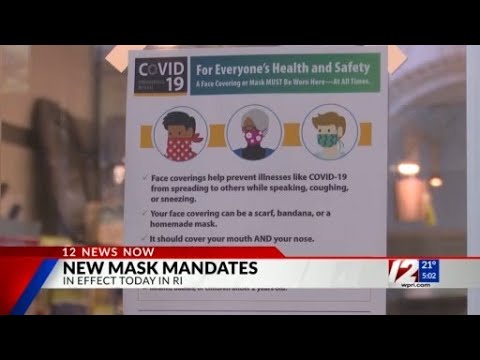Introduction: Examining the Safety of Rhode Island Cities
Rhode Island, the smallest state in the United States, is known for its charming coastal towns, historic cities, and vibrant culture. However, like any other state, Rhode Island is not exempt from crime and safety concerns. In this article, we will delve into an analysis of the safety levels in various cities across Rhode Island. By examining crime rates, safety measures, and public safety initiatives, we aim to determine which city in Rhode Island is the most dangerous.
Understanding the Criteria for Measuring City Safety
When assessing the safety of a city, various factors come into play. Key indicators often include crime rates, such as violent crimes, property crimes, and drug-related offenses. Additionally, data on safety measures and public safety initiatives are crucial in evaluating a city’s overall safety level. By considering these criteria, we can gain a comprehensive understanding of the safety landscape in each Rhode Island city.
Providence: Analyzing Crime Rates and Safety Measures
Providence, the capital city of Rhode Island, is a vibrant urban center with a rich cultural heritage. However, it also grapples with crime-related challenges. According to recent statistics, Providence has a higher crime rate compared to the national average. Violent crimes, including homicide and assault, are particularly prevalent. To combat these issues, the city has implemented various safety measures, such as increased police presence and community-based programs, aimed at reducing crime and improving public safety.
Cranston: A Closer Look at Crime Statistics and Trends
Cranston, a suburban city located just south of Providence, enjoys a reputation for being one of the safer communities in Rhode Island. Crime rates in Cranston are generally lower than the state and national averages. However, like any city, it faces certain safety concerns. Property crimes, such as burglary and theft, remain a challenge in Cranston. The city has responded by enhancing community policing efforts and fostering partnerships with residents to ensure a safe living environment.
Warwick: Evaluating Safety Measures and Criminal Activity
Warwick, the second-largest city in Rhode Island, is often regarded as a safe city with a lower crime rate compared to many other urban areas. While Warwick does experience some criminal activity, it is primarily related to property crimes. The city has implemented effective safety measures, such as neighborhood watch programs and community policing initiatives, to mitigate these issues. These efforts have contributed to Warwick’s reputation as a relatively secure city for its residents.
Pawtucket: Assessing Crime Rates and Public Safety Measures
Pawtucket, a city located in the northeastern part of Rhode Island, has experienced fluctuations in crime rates over the years. While efforts have been made to combat crime, including initiatives focused on drug-related offenses, Pawtucket still faces challenges in terms of public safety. The city has worked to strengthen partnerships between law enforcement and community organizations to address crime and improve safety for its residents.
Woonsocket: Examining Criminal Incidents and Safety Initiatives
Woonsocket, a small city in northern Rhode Island, has witnessed a decline in crime rates in recent years. However, it still faces certain safety concerns. Woonsocket has implemented safety initiatives, such as community outreach programs and enhanced surveillance systems, to address criminal incidents. By fostering collaboration between residents, businesses, and law enforcement agencies, Woonsocket aims to create a safer environment for its community members.
Newport: Analyzing Safety Measures and Crime Prevalence
Newport, a popular tourist destination renowned for its historic charm and scenic beauty, faces unique safety challenges due to its transient population and bustling tourism industry. While Newport experiences higher crime rates during peak tourist seasons, overall crime rates remain relatively low compared to other Rhode Island cities. The city has implemented safety measures, such as increased police patrols and the promotion of community involvement, to maintain a safe environment for both residents and visitors.
East Providence: Evaluating Safety Initiatives and Crime Data
East Providence, a suburban city bordering Providence, boasts a reputation for being a relatively safe community. Crime rates in East Providence are generally lower than the state average, with property crimes being the most common. The city has implemented safety initiatives, such as neighborhood watch programs and community policing efforts, to ensure a secure environment for its residents. By actively engaging with the community, East Providence aims to prevent and address any safety concerns effectively.
Central Falls: Assessing Crime Rates and Public Safety Efforts
Central Falls, a small city in Rhode Island, faces unique safety challenges due to its high population density and socioeconomic factors. Historically, Central Falls has had higher crime rates compared to other cities in Rhode Island. However, in recent years, the city has made significant progress in reducing crime through community involvement, targeted law enforcement efforts, and innovative safety initiatives. Central Falls continues to work diligently to improve public safety and address the root causes of crime.
North Providence: Examining Criminal Activity and Safety Measures
North Providence, a suburban city just outside of Providence, is known for its safe neighborhoods and tight-knit community. Crime rates in North Providence are generally lower than both the state and national averages. The city has implemented various safety measures, including community-based programs and proactive policing strategies, to maintain its reputation as a safe place to live. By fostering a strong partnership between law enforcement and residents, North Providence aims to ensure the continued safety of its community.
West Warwick: Analyzing Crime Statistics and Public Safety
West Warwick, a small town in Rhode Island, maintains a relatively low crime rate compared to many other cities in the state. Property crimes, such as theft and vandalism, are the primary concerns in West Warwick, although the overall crime rate remains lower than the national average. The town has implemented safety measures, including increased police presence and community engagement, to address these issues. Through these efforts, West Warwick strives to maintain a safe and secure environment for its residents.
Conclusion: Determining the Most Dangerous City in Rhode Island
While each city in Rhode Island faces its unique safety challenges, it is crucial to acknowledge the collective efforts made by both law enforcement agencies and community members to ensure public safety. Based on the analysis of crime rates, safety measures, and public safety initiatives, it is evident that some cities, such as Providence and Central Falls, have higher crime rates compared to others. However, it is important to note that crime rates can vary and change over time. Therefore, it is essential for residents and local authorities to remain vigilant and continue their collaborative efforts in creating safer communities throughout the state of Rhode Island.





